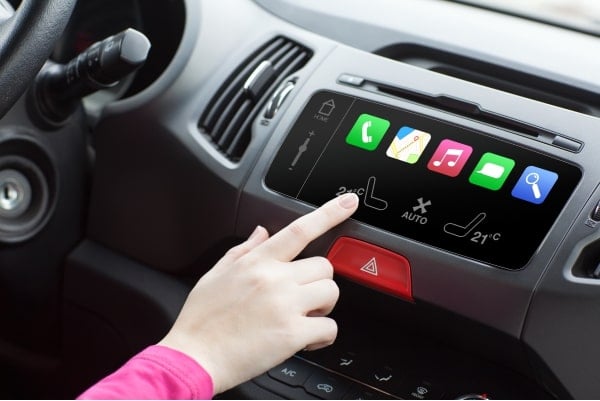
Multimedia Streaming Solution for Digital Signage
Employs an LTE connection to manage device and content
The client is a major US telecom provider. The company had a multimedia streaming solution and wanted to add more functionality to it.
Case Highlights
- Uses a customized Android OS
- Supports remote device setup, management, and multimedia content upload over LTE
- Firmware updates over the air
- Reports device location to the server (GPS)
- Driven by an AWS-based back end
Project Information
Fixed Price
Kanban
Java Developers
Embedded Engineers
Android Developers
iOS Developer
DevOps
QA Engineers
Business Analysts
Project Manager
Problem
The client needed to upgrade their digital signage devices installed in public venues. The system had to allow advertising agencies to broadcast content on them via a custom LTE device.
So, the client turned to Softeq to develop a back end, mobile apps, and custom Android firmware.
Solution

How It Works
To broadcast ads on a digital screen, users insert the device into a flat panel display, connect to the device remotely using the mobile application and Advertiser Portal, and choose the appropriate settings. The data is communicated over LTE. Source content can be simultaneously broadcast to multiple flat panels carrying the streaming device. The solution is integrated with AWS services and enables remote device management and monitoring.
Firmware
The Softeq team customized the Android OS and created a system app to operate the device. The firmware solution supports custom streaming-specific functionality, including display auto-detection, reporting, and connecting devices to the Admin Portal.
Key features include:
- A custom launcher
- Over-the-air (OTA) updates
- Secure communication with the back end (MQTT, TLS)
- Device to server location reporting (GPS)
The device is interfaced with a custom LTE modem through middleware. This allowed us to implement several features outside the LTE network scope, such as caching and multicast capabilities.
Admin Portal
The Admin Portal is designed to create and manage advertisers’ profiles and assign devices to a specific account.
It also enables remote system support. Through the portal, the support team can track device status to quickly respond to problems.
Advertiser Portal
Softeq developed the back-end part of the web portal for advertisers. Key portal features include:
- Creation and scheduling marketing campaigns
- Creation of playlists and layouts
- Content uploading
- Device setup and management
- Role and permission assignment
- Report generation
Mobile Applications
The iOS and Android mobile applications serve as a simplified version of the Advertiser Portal. The apps help set up and manage media content output: screen orientation, resolution, current status, device location, etc. Other functions include device management, device group management, and user group management.
Security
To access the device with admin permissions, the user needs to enter a time-sensitive 8-digit PIN. Communication between the server and the device is encrypted with the help of MQTT, a lightweight messaging protocol, which runs over a secure TLS channel.
The team also built a system that generates certificates securing the communication between the device and the server. The hardware provider employs this system in device manufacturing so that the end solution comes with the right certificate preinstalled on the device.
Similar Project Idea?
Explore how you can leverage custom firmware development to integrate your devices into a cohesive IoT system Learn more
Result
The device is currently on the market. Together with the client, we are now working on extra features, which will boost performance in crowded places where a large number of users connect to a wireless network at the same time.
These include:
- Firmware porting to Android 8+
- Connecting the streaming devices into MESH networks to reduce external wireless network load
- Interfacing with 3rd-party media streaming devices
- Running Augmented Reality apps on digital signage
Related Cases




